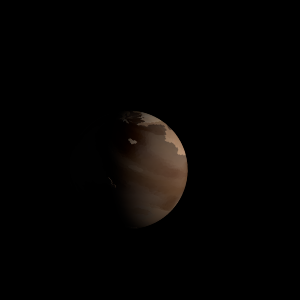|
|
Space Astro
|
Info for exoplanet "Puck"
| Scientific (actual) data |
|---|
| Name | Kepler-1350 c |
| Planet status | Confirmed |
| Radius | 0.154 |
| Orbital period | 1.76679 |
| Discovered | 2016 |
| Updated | 2021-02-05 |
| Tconj | 2454970 |
| Publication | Announced on a website |
| Detection type | Primary Transit |
| Alternate names | 2MASS J19130013+4640465 c, K02793.02, KIC 9823519 c, KOI-2793 c, KOI-2793.02, WISE J191300.14+464046.2 c |
| Star name | Kepler-1350 |
| Right ascension | 288.25° |
| Declination | 46.68° |
| Mag j | 13.989 |
| Mag h | 13.338 |
| Mag k | 13.122 |
| Star distance | 350 |
| Star metallicity | -0.06 |
| Star mass | 0.55 |
| Star radius | 0.53 |
| Star age | 4.57 |
| Star temperature | 3827 |
| Star alternate names | 2MASS J19130013+4640465, KIC 9823519, KOI-2793, WISE J191300.14+464046.2 |
| Wikipedia article | Kepler-1350 c |
Back
| |
| Fictional info (?) |
|---|
| Suggested name | Puck |
| Planet type | Cold planet |
|
| Atmosphere | Hydrogen peroxide | 77% |
| Molecular hydrogen | 18% |
| Ammonia | 2.8% |
| Krypton | 0.5% |
| Hydrogen deuteride (HD) | 0.49% |
| Helium | 0.31% |
| Carbon dioxide | 0.095% |
| Ethane | 0.062% |
| Xenon | 0.01% |
| Atmospheric pressure | 12 bar |
 |
| No known satellites |
| Google search for Puck |
|
Website by Joachim Michaelis
|
|
|
|